- Choosing the Right Soil for Planting Strawberry Seeds
- Soil Texture
- Soil pH
- Organic Matter
- Drainage
- Fertility
- Conclusion
- Understanding Soil Amendments for Optimal Growth
- How to Apply Soil Amendments
- Considerations for Organic Gardening
- Importance of pH levels in Soil for Strawberry Seeds
- Optimum pH Range
- Effects of Acidic Soil
- Effects of Alkaline Soil
- Testing Soil pH
- pH Adjustments
- Conclusion
- Enhancing Soil Drainage for Successful Strawberry Seed Germination
- The Necessity of Stratification in Growing Healthy Strawberry Plants
- Why is stratification necessary?
- How to stratify strawberry seeds?
- Benefits of stratification
- How to Stratify Strawberry Seeds for Improved Germination
- Timing and Temperature Considerations for Successful Stratification
- Timing
- Temperature
- Transplanting Stratified Strawberry Seeds for Outdoor Cultivation
- Question-answer:
- What is the best soil amendment for planting strawberry seeds?
- Can I use chemical fertilizers instead of organic matter?
- Is stratification necessary for planting strawberry seeds?
- What happens if I don’t stratify strawberry seeds?
- Can I plant strawberry seeds directly in the garden?
- How long does it take for strawberry seeds to germinate?
- Can I grow strawberries indoors from seeds?
- Video: How To! Growing Strawberries From Seeds (2019)
Planting strawberry seeds can be an exciting venture for any home gardener. With the right soil amendments and proper stratification, you can ensure the successful germination of your strawberry seeds and the growth of healthy, productive plants. In this article, we will discuss some essential tips for planting strawberry seeds, focusing on the importance of soil amendments and the necessity of stratification.
One crucial aspect to consider when planting strawberry seeds is the soil composition. Strawberries thrive in well-draining soil that is rich in organic matter. Before planting, it is recommended to amend the soil with compost or well-rotted manure to improve its fertility and drainage. This will provide the strawberry plants with the necessary nutrients for vigorous growth and help prevent waterlogged conditions that can lead to root rot.
Another vital step in planting strawberry seeds is the process of stratification. Stratification is the simulation of the natural conditions that seeds go through during the winter period, which is necessary for their proper germination. Without stratification, strawberry seeds may have low germination rates or may fail to germinate at all. To stratify your seeds, place them in a sealable plastic bag along with some damp sphagnum moss and refrigerate them for about 4-6 weeks. This cold period will break the seeds’ dormancy and prompt germination when the conditions are right.
By amending the soil and stratifying the seeds, you can greatly increase the chances of successful germination and growth of your strawberry plants. Remember to provide your plants with adequate sunlight, regular watering, and proper spacing for optimal growth. With these tips in mind, you can enjoy a bountiful harvest of delicious strawberries from your own backyard.
Choosing the Right Soil for Planting Strawberry Seeds
When it comes to planting strawberry seeds, choosing the right soil is crucial for the success of your plants. Strawberries thrive in well-draining soil that is rich in organic matter and slightly acidic. Here are some factors to consider when selecting the soil for planting strawberry seeds.
Soil Texture
Strawberries prefer loamy soil that has a balance between sand, silt, and clay particles. Loamy soil provides good drainage while retaining enough moisture for the plants. Sandy soil drains too quickly, leaving the plants thirsty, while clayey soil holds onto water, causing the roots to become waterlogged. Mixing in organic matter, such as compost or well-rotted manure, can help improve the soil texture.
Soil pH
The pH level of the soil is also important for strawberry plants. They prefer slightly acidic soil with a pH between 5.5 and 6.5. A pH test kit can be used to determine the acidity of the soil. If the pH is too high, sulfur or acidifying fertilizers can be added to lower it. Conversely, if the pH is too low, lime or dolomite lime can be added to raise it.
Organic Matter
Strawberries benefit from soil that is rich in organic matter. Adding compost, well-rotted manure, or shredded leaves to the soil before planting will provide essential nutrients for the plants and improve soil structure. Organic matter also helps retain moisture and promotes beneficial microbial activity in the soil.
Drainage
Good drainage is essential for growing healthy strawberry plants. Standing water can lead to root rot and other diseases. If your soil has poor drainage, you can amend it by adding organic matter, perlite, or sand to improve drainage. Raised beds or containers can also be used to ensure proper drainage.
Fertility

Strawberry plants require a fertile soil to produce abundant fruits. To provide the necessary nutrients, you can mix in a balanced organic fertilizer or slow-release granular fertilizer before planting. Regularly feeding the plants with organic fertilizer throughout the growing season will help promote strong growth and maximize fruit production.
Conclusion
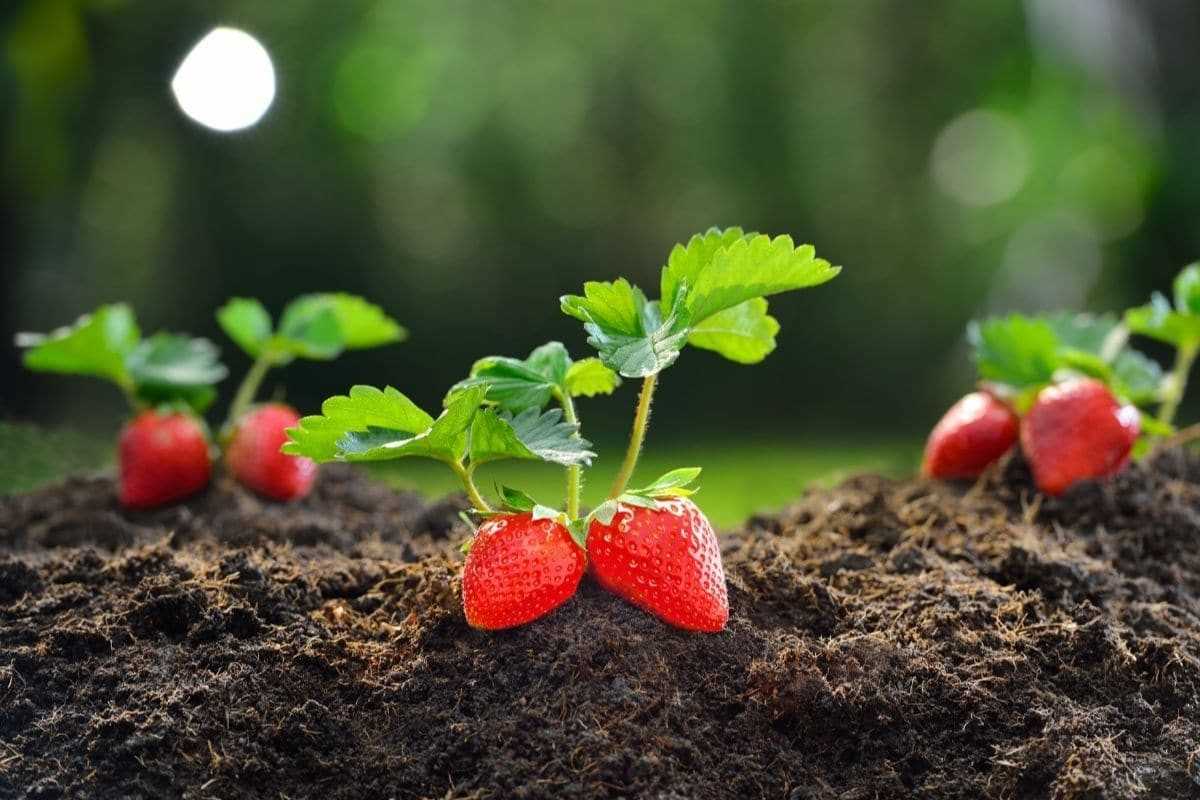
Choosing the right soil for planting strawberry seeds is crucial for their success. By considering factors such as soil texture, pH level, organic matter content, drainage, and fertility, you can create an ideal growing environment for your strawberry plants. Remember to regularly monitor the soil moisture and adjust watering as needed to ensure healthy plant growth.
Understanding Soil Amendments for Optimal Growth
Soil amendments are essential for ensuring optimal growth and health of strawberry plants. They help improve the soil structure, fertility, and nutrient availability, which are all crucial for successful growth. Here are some common soil amendments used for planting strawberries:
- Compost: Adding compost to the soil helps improve its structure and fertility. It increases the ability of the soil to hold moisture and nutrients, providing a favorable environment for the roots to grow.
- Well-rotted manure: Manure, when properly decomposed, adds organic matter and nutrients to the soil. It enhances soil structure, improves drainage, and promotes healthy root development.
- Peat moss: Peat moss is often used to improve soil moisture retention and aeration. It helps prevent compaction and ensures adequate air circulation around the roots.
- Perlite or vermiculite: These amendments are commonly used for their ability to improve soil drainage and aeration. They help prevent waterlogging and keep the soil well-aerated, promoting healthy root growth.
- Leaf mold: Leaf mold is rich in organic matter and essential nutrients. It improves soil structure, enhances water retention, and encourages beneficial microbial activity in the soil.
- Bone meal: Bone meal is a natural source of phosphorus and calcium. It helps promote root development, flowering, and fruiting in strawberry plants.
It is important to consider and test your soil’s composition before adding any amendments. Soil testing can help identify deficiencies or imbalances in nutrients and pH levels, allowing you to make informed choices about the type and quantity of amendments needed.
How to Apply Soil Amendments
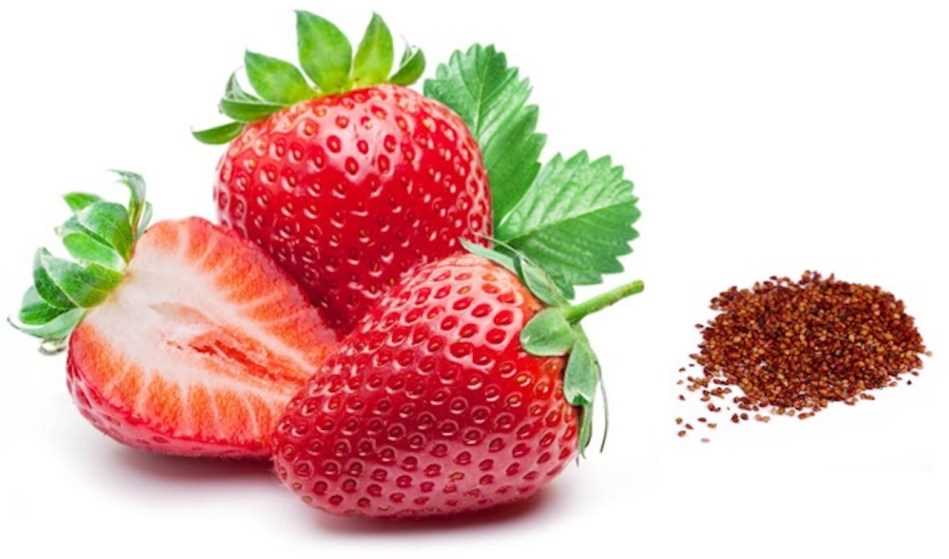
When applying soil amendments, it is recommended to work them into the top 6-8 inches of soil, ensuring they are evenly distributed. This will help incorporate the amendments into the root zone and provide a better environment for roots to establish and grow.
Before planting strawberry seeds, allow enough time for the soil amendments to fully integrate with the existing soil. It is generally ideal to amend the soil several weeks before planting to ensure maximum effectiveness. Adequate watering and regular monitoring of the moisture levels will help ensure that the amendments are thoroughly mixed into the soil.
Considerations for Organic Gardening
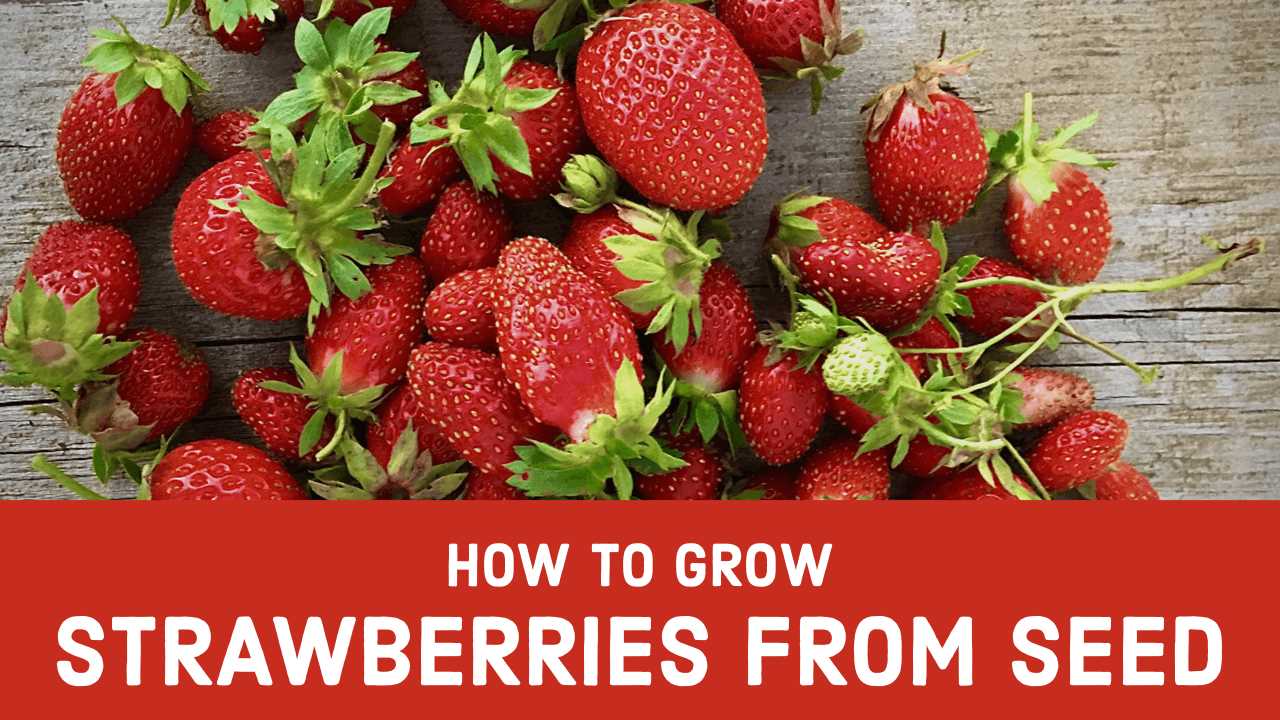
If you are practicing organic gardening, it is important to choose organic amendments to maintain the integrity of your garden. Look for amendments that are certified organic or derived from natural sources to ensure they meet organic gardening standards.
Organic amendments, such as compost and well-rotted manure, provide additional benefits like improving soil health and supporting a diverse population of beneficial organisms.
In summary, understanding and using the right soil amendments are crucial for optimal growth and productivity of strawberry plants. By enriching the soil with organic matter, improving structure, and addressing nutrient deficiencies, you can create a favorable environment for healthy and abundant strawberry growth.
Importance of pH levels in Soil for Strawberry Seeds
When planting strawberry seeds, one important factor to consider is the pH level of the soil. The pH level of the soil refers to its acidity or alkalinity, with a pH of 7 being considered neutral, lower values indicating acidity, and higher values indicating alkalinity.
Optimum pH Range
Strawberry seeds prefer a slightly acidic soil with a pH range between 5.5 and 6.5. This pH range provides the ideal conditions for the seeds to germinate and the plants to grow. If the soil is too acidic or alkaline, it can affect the seed germination process and the overall growth of the plants.
Effects of Acidic Soil
If the soil is too acidic (pH below 5.5), it can hinder the absorption of essential nutrients by the strawberry plants. This can lead to nutrient deficiencies, stunted growth, and reduced fruit production. Acidic soil also increases the risk of certain diseases and pests that can affect the health of the plants.
Effects of Alkaline Soil
On the other hand, if the soil is too alkaline (pH above 6.5), it can also result in nutrient deficiencies. The availability of certain nutrients, such as iron and manganese, decreases in alkaline soil, leading to yellowing of leaves and poor plant development. Additionally, alkaline soil can reduce the availability of phosphorus, which is crucial for fruit production in strawberries.
Testing Soil pH
Before planting strawberry seeds, it is essential to test the pH level of the soil to determine if any amendments are needed. Soil testing kits are readily available and can provide accurate measurements of soil pH. If the soil pH is not within the optimal range, appropriate amendments can be applied to adjust it accordingly.
pH Adjustments
To raise the pH of acidic soil, adding lime or wood ash can help increase alkalinity. To lower the pH of alkaline soil, organic matter like peat moss or elemental sulfur can be incorporated into the soil. It is vital to adjust the pH before planting the strawberry seeds to provide the best growing conditions and ensure successful germination.
Conclusion
Ensuring the correct pH level of the soil is crucial for the successful growth of strawberry seeds. By maintaining a slightly acidic soil with a pH range between 5.5 and 6.5, the plants will be able to uptake essential nutrients, develop properly, and produce healthy and abundant fruit. Regular soil testing and appropriate amendments can help achieve the optimal pH level for strawberry seed planting.
Enhancing Soil Drainage for Successful Strawberry Seed Germination
Proper soil drainage is crucial for successful strawberry seed germination. Excess moisture in the soil can lead to rotting of the seeds and poor germination rates. To enhance soil drainage and create an optimal environment for strawberry seed germination, consider the following tips:
- Choose a well-draining soil: Select a soil mix that has good drainage properties. Sandy loam or sandy soil is usually ideal for strawberries, as it allows water to drain more easily.
- Amend the soil with organic matter: Improve soil drainage by adding organic matter, such as compost or well-rotted manure. These additions can help break up clay soils and improve water movement through the soil.
- Provide proper soil depth: Strawberry seeds should be sown at a shallow depth, between 1/8 and 1/4 inch deep. If the soil is too compacted or lacks adequate depth, consider loosening it before planting to promote better drainage.
- Avoid overwatering: Watering is crucial for seed germination, but it’s important not to overwater. Excessive moisture in the soil can lead to waterlogging and inhibit germination. Allow the soil to dry out slightly between waterings to prevent this issue.
- Consider raised beds: If your garden soil has poor drainage, consider creating raised beds for planting strawberries. Raised beds provide better control over soil moisture and drainage and can help prevent waterlogging.
By implementing these strategies, you can enhance soil drainage for successful strawberry seed germination. Remember to monitor the soil moisture levels and water the seeds as needed, providing the right balance of moisture for optimal growth and germination.
The Necessity of Stratification in Growing Healthy Strawberry Plants
Strawberries are delicious fruits that can be easily grown in home gardens, but to ensure the healthy growth and development of strawberry plants, stratification is a necessary step. Stratification is the process of subjecting strawberry seeds to a period of cold and moist conditions to break their natural dormancy and promote germination.
Why is stratification necessary?
Strawberry seeds naturally have a hard outer coat that prevents them from germinating immediately after dispersal. This hard coat protects the seeds from unfavorable conditions and preserves their viability. However, this dormancy can also hinder the germination process when trying to grow strawberries from seeds.
By subjecting the strawberry seeds to a period of cold stratification, the hard outer coat is softened and weakened. This allows water and air to penetrate the seed, triggering the germination process. The cold and moist conditions mimic the natural conditions that strawberry seeds experience during the winter months, signaling to the seeds that it is time to break dormancy and start growing.
How to stratify strawberry seeds?
Stratifying strawberry seeds is a simple process that can be done at home. Here is a step-by-step guide:
- Gather your strawberry seeds and place them in a damp paper towel or a plastic bag with a damp paper towel.
- Seal the paper towel or the plastic bag to retain moisture.
- Place the paper towel or bag in the refrigerator, where temperatures are typically around 4-7°C (40-45°F).
- Leave the seeds in the refrigerator for a period of 3-4 weeks.
- After the stratification period, remove the seeds from the refrigerator and sow them in prepared soil.
By following these steps, you can ensure that your strawberry seeds have undergone the necessary stratification process and are ready to germinate and grow into healthy strawberry plants.
Benefits of stratification
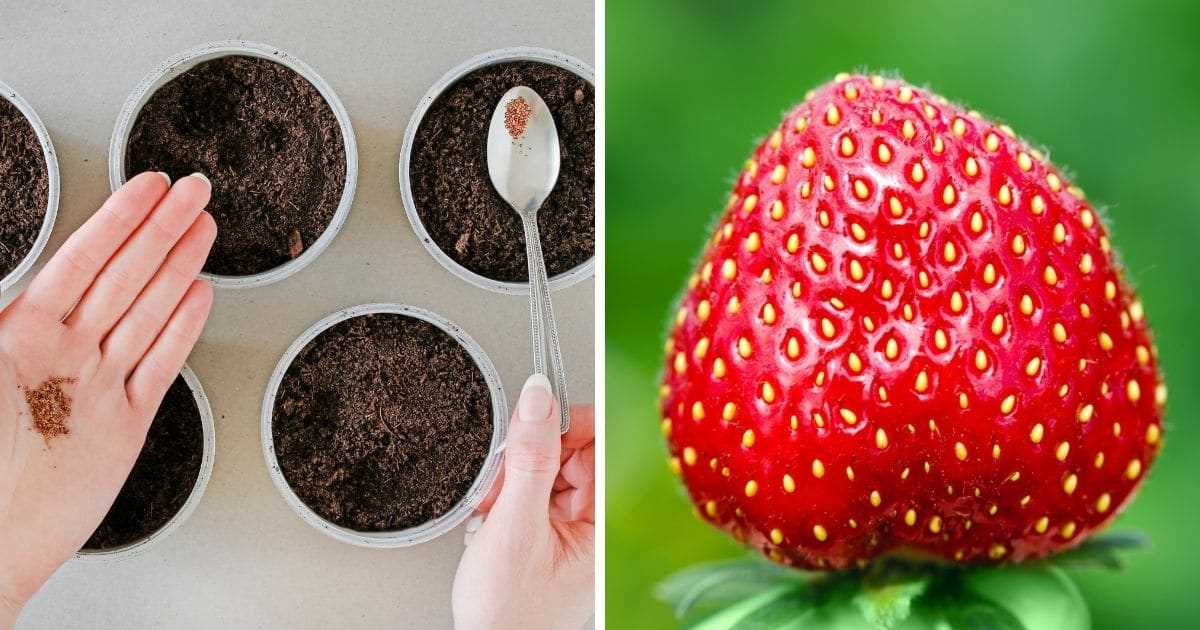
Stratification not only promotes germination in strawberry seeds but also improves the overall success rate of growing healthy strawberry plants. By providing the seeds with the ideal conditions for germination, stratification increases the chances of seed viability and seedling establishment.
Additionally, stratification helps synchronize the growth of strawberry plants, resulting in more uniform and consistent plant development. This is particularly important when growing strawberries for commercial purposes or in larger scale gardens.
| Benefits of Stratification |
|---|
| Enhances germination |
| Improves seed viability |
| Promotes uniform plant growth |
| Increases success rate of growing healthy strawberry plants |
In conclusion, stratification is a necessary step in growing healthy strawberry plants from seeds. By subjecting the seeds to a period of cold and moist conditions, stratification breaks dormancy and promotes germination. Following the proper stratification process will increase the chances of seed viability and result in more successful and healthy strawberry plants.
How to Stratify Strawberry Seeds for Improved Germination
Stratifying strawberry seeds is an important step in promoting better germination rates. This process imitates the natural conditions that strawberries experience during winter, breaking their dormancy and preparing them for spring growth. By providing the necessary cold treatment, you can significantly improve the chances of successful germination and ultimately increase your strawberry harvest. Here are some steps to stratify strawberry seeds effectively:
- Selecting the seeds: Choose high-quality strawberry seeds from a reputable source. Look for seeds that are fresh, well-matured, and free from any signs of damage or disease.
- Seed cleaning: Before stratification, it’s important to clean the seeds to remove any pulp or other remnants. Rinse the seeds gently with water and pat them dry using a paper towel.
- Pre-stratification treatment: Some strawberry seeds may benefit from a pre-stratification treatment, also known as scarification. This involves lightly scratching or scoring the seed coat to increase water absorption and promote germination. However, not all strawberry seeds require scarification, so it’s essential to research the specific variety you are working with.
- Stratifying the seeds: Start by placing the cleaned and pre-treated strawberry seeds into a sealable plastic bag or airtight container. Add a damp paper towel or some moistened vermiculite to provide a moist environment for the seeds. Seal the bag or container tightly and label it with the date and seed variety.
- Cold treatment: Place the sealed bag or container in the refrigerator, ensuring a temperature of around 32-41°F (0-5°C). Keep the seeds in the cold environment for at least 4-6 weeks, although some varieties may require longer stratification periods. Avoid exposing the seeds to freezing temperatures, as extreme cold can damage them.
- Monitoring the seeds: Check the seeds regularly during the stratification period to ensure they remain moist. If the paper towel or vermiculite appears dry, lightly spray it with water to maintain the necessary moisture level. Avoid over-saturating the seeds, as excessive moisture can lead to mold or rot.
- Gradual transition: After the recommended stratification period, slowly transition the seeds to warmer temperatures. This can be done by placing the container or bag in a cool area for a few days before moving it to a location with room temperature. This gradual transition helps the seedlings adjust to the changing environment.
- Sowing the stratified seeds: Once the seeds have completed the stratification process and are ready for sowing, follow the recommended planting guidelines for your specific strawberry variety. Prepare a seed tray or pots with well-draining soil, plant the stratified seeds at the appropriate depth, and provide them with adequate moisture and sunlight for optimal germination and growth.
By stratifying your strawberry seeds, you can significantly increase the success rate of germination and ensure healthy plant development. Following these steps and providing the necessary cold treatment will help you cultivate strong and productive strawberry plants.
Timing and Temperature Considerations for Successful Stratification
Stratification is a process that involves subjecting strawberry seeds to a period of cold and moist conditions in order to break their natural dormancy and promote germination. However, it is important to carefully consider both the timing and temperature conditions for successful stratification.
Timing
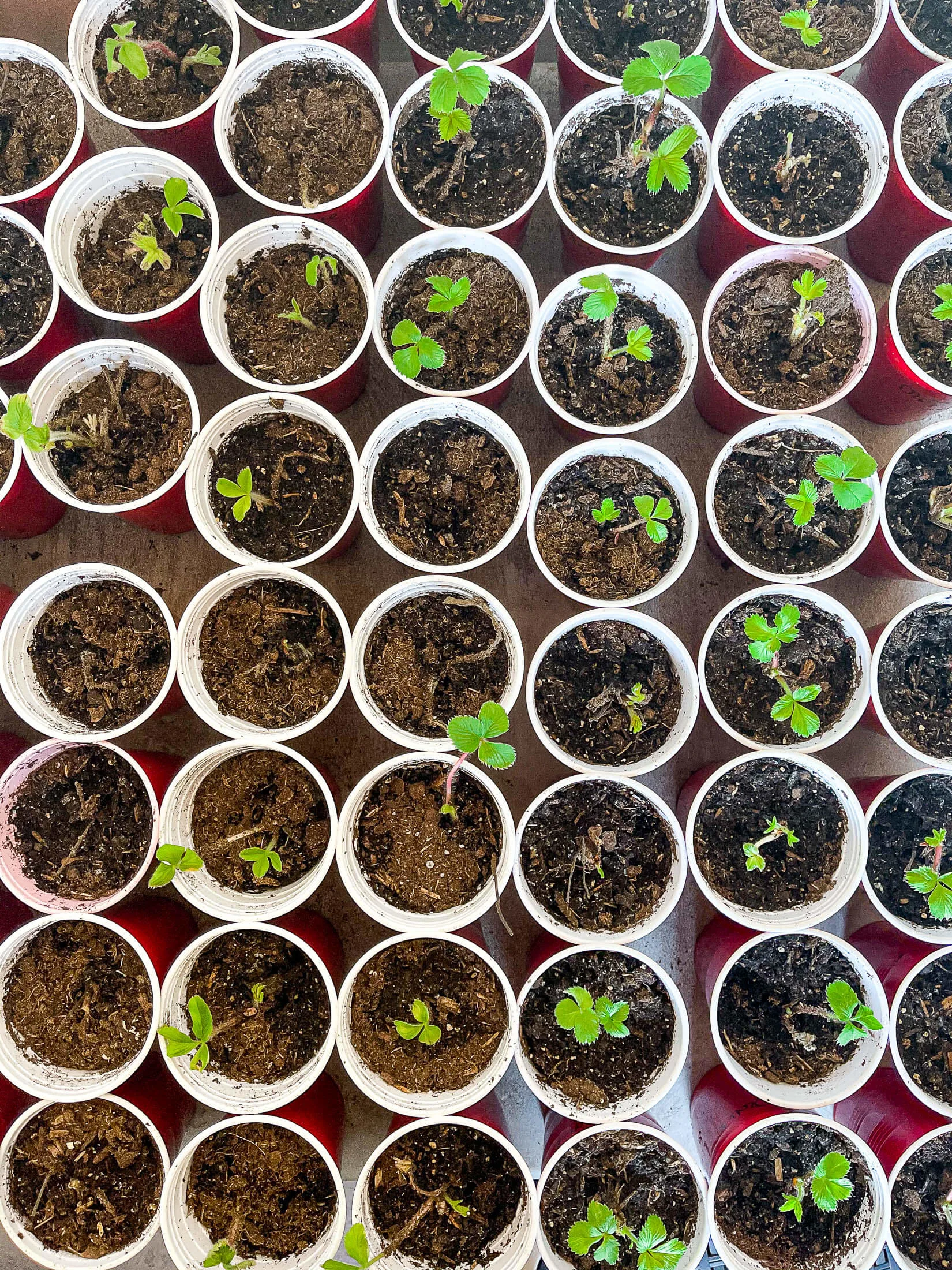
The timing for stratification is crucial for the successful germination of strawberry seeds. Generally, it is recommended to start the stratification process in late winter or early spring, depending on your local climate. This timing allows the seeds to go through the required period of cold temperatures before the growing season begins. Starting the stratification process too early or too late may affect the germination success rates.
Temperature
The temperature conditions during stratification are also important for successful germination. The ideal temperature range for stratification is typically between 32°F (0°C) and 41°F (5°C). It is important to maintain a consistent temperature within this range throughout the stratification period. Fluctuations in temperature can disrupt the dormancy-breaking process and negatively affect germination rates. Depending on your climate, you can choose to stratify the seeds outdoors, in a cold frame, or in a refrigerator to ensure a consistent and appropriate temperature.
It is worth noting that some strawberry varieties may have specific temperature requirements for stratification. It is always recommended to refer to the specific planting information provided by the seed supplier or consult local gardening resources for the best timing and temperature considerations for the strawberry variety you are planting.
Transplanting Stratified Strawberry Seeds for Outdoor Cultivation
Transplanting stratified strawberry seeds is an important step in the process of growing strawberries outdoors. Stratification refers to the process of exposing seeds to a period of cold temperatures, which helps to break their dormancy and promote germination. After stratifying the seeds, it’s time to transplant them into the garden bed.
Here are some tips for transplanting stratified strawberry seeds:
- Prepare the garden bed: Choose a sunny location with well-draining soil for planting strawberries. Remove any weeds, rocks, or debris from the area and loosen the soil using a garden fork or tiller. Add organic matter, such as compost or aged manure, to improve soil fertility and drainage.
- Planting depth: Dig small holes in the garden bed, spacing them about 12-18 inches apart. The depth of the holes should be such that the crown of the strawberry plant sits just above the soil surface. Avoid planting the crowns too deep, as this can lead to rotting.
- Transplanting the seedlings: Gently remove the stratified strawberry seedlings from their containers or seed trays. Be careful not to damage the roots. Place each seedling into a hole, making sure the crown is positioned correctly. Fill in the hole with soil, pressing it firmly around the seedling to eliminate air pockets.
- Watering: After transplanting, water the strawberry seedlings thoroughly. This helps to settle the soil and establish good root-to-soil contact. Water the plants regularly to keep the soil evenly moist, but avoid overwatering, as this can lead to root rot.
- Mulching: Apply a layer of mulch around the seedlings to help conserve moisture, suppress weeds, and regulate soil temperature. Avoid placing mulch directly against the crowns of the plants, as this can create a favorable environment for pests and diseases.
- Supporting the plants: As the strawberry plants grow, they may need support to keep the fruit off the ground and prevent it from rotting. Installing a trellis, cage, or stakes can help to keep the plants upright and allow for better air circulation.
By following these steps, you can successfully transplant stratified strawberry seeds and enjoy a bountiful harvest of delicious strawberries in your garden.
Question-answer:
What is the best soil amendment for planting strawberry seeds?
The best soil amendment for planting strawberry seeds is organic matter, such as compost or well-rotted manure. This helps improve soil fertility, moisture retention, and drainage, creating optimal conditions for the seeds to germinate and the plants to grow.
Can I use chemical fertilizers instead of organic matter?
While chemical fertilizers can provide nutrients to the plants, they are not as beneficial as organic matter. Organic matter not only provides essential nutrients but also improves soil structure and microbial activity. Therefore, it is recommended to use organic matter rather than relying solely on chemical fertilizers.
Is stratification necessary for planting strawberry seeds?
Yes, stratification is necessary for planting strawberry seeds. Stratification is the process of exposing the seeds to cold temperatures for a certain period of time, which helps to break their dormancy. This mimics the conditions the seeds would naturally experience during the winter. Stratification can be done by placing the seeds in a moist paper towel and refrigerating them for 3-4 weeks before planting.
What happens if I don’t stratify strawberry seeds?
If you don’t stratify strawberry seeds, they may have a lower germination rate or may not germinate at all. Strawberry seeds have a natural dormancy mechanism that prevents them from germinating immediately after being harvested. If the seeds are not stratified, this dormancy may not be broken, and the seeds will remain dormant and won’t sprout.
Can I plant strawberry seeds directly in the garden?
Yes, you can plant strawberry seeds directly in the garden. However, it is important to prepare the soil beforehand by removing any weeds or grass and adding organic matter for improved fertility. Additionally, it is recommended to stratify the seeds before planting to increase the chances of germination.
How long does it take for strawberry seeds to germinate?
Strawberry seeds can take anywhere from 2 to 4 weeks to germinate. The exact time may vary depending on various factors such as temperature, moisture, and the specific variety of strawberry. It is important to be patient and provide the right growing conditions for the seeds during this period.
Can I grow strawberries indoors from seeds?
Yes, you can grow strawberries indoors from seeds. This can be done in containers or pots with good drainage. It is important to provide the seeds with enough light, moisture, and the right temperature for germination. Once the plants have sprouted, they can be moved into larger containers or transplanted into the garden if desired.







